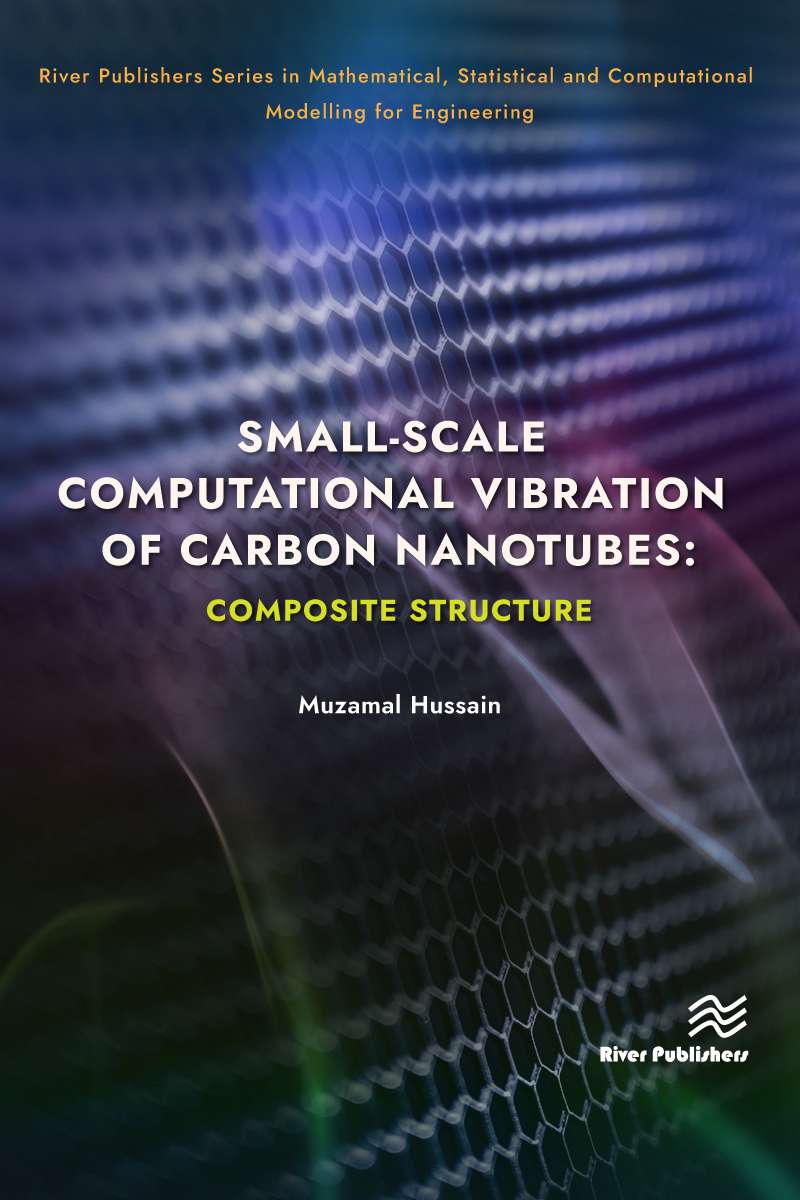River Publishers Series in Mathematical, Statistical and Computational Modelling for Engineering
Small-scale Computational Vibration of Carbon Nanotubes: Composite Structure Forthcoming
Author: Muzamal Hussain, Government College University Faisalabad, Pakistan
ISBN: 9788770228657 e-ISBN: 9788770228510
Available: March 2024
This book presents orthotropic vibration modeling and analysis of carbon nanotubes (CNTs)which be helpful in applications such as oscillators and in non-destructive testing, andalso vibrations characteristics of armchair double-walled CNT by means of nonlocal elasticity shell model. The nonlocal shell model is established by inferring the nonlocal elasticity equations in to Kelvin’s theory, which is our particular motivation. The suggested method to investigate the solution of fundamental Eigen relations is wave propagation, which is a well-known and efficient technique to develop the fundamental frequency equations. The frequencies of three different types of SWCNTs are calculated. Also, the vibrations of the chiral single-walled carbon nanotube (SWCNTs) with non-local theory using wave propagation approach is investigated. It has been investigated that by increasing the nonlocal parameter decreases the frequencies and on increasing the aspect ratio increases the frequencies throughout the computation frequencies of clamped-free lower than that of clamped-clamped.
Carbon nanotubes have a variety of applications because of their distinctive molecular structure and show unique electronic and mechanical properties because of their curvature. Nanotubes and micro-beams can be cited as one of the very applicable micro- and nano-structures in various systems, namely, sensing devices, communications and the quantum mechanics. The application of the tiny structures, specifically, carbon nanotubes in the sensors and actuators enforce the engineers to study vibrational properties of those structures experimentally and theoretically. In addition, they are utilized in different fields such as bioengineering, tissue engineering, computer engineering, optics, energy and environmental systems.
Carbon nanotubes have a variety of applications because of their distinctive molecular structure and show unique electronic and mechanical properties because of their curvature. Nanotubes and micro-beams can be cited as one of the very applicable micro- and nano-structures in various systems, namely, sensing devices, communications and the quantum mechanics. The application of the tiny structures, specifically, carbon nanotubes in the sensors and actuators enforce the engineers to study vibrational properties of those structures experimentally and theoretically. In addition, they are utilized in different fields such as bioengineering, tissue engineering, computer engineering, optics, energy and environmental systems.
Orthotropic Kelvin modeling, single-walled carbon nanotubes, frequency analysis, theoretical non-local effect, armchair, zigzag and chiral carbon nanotubes.
